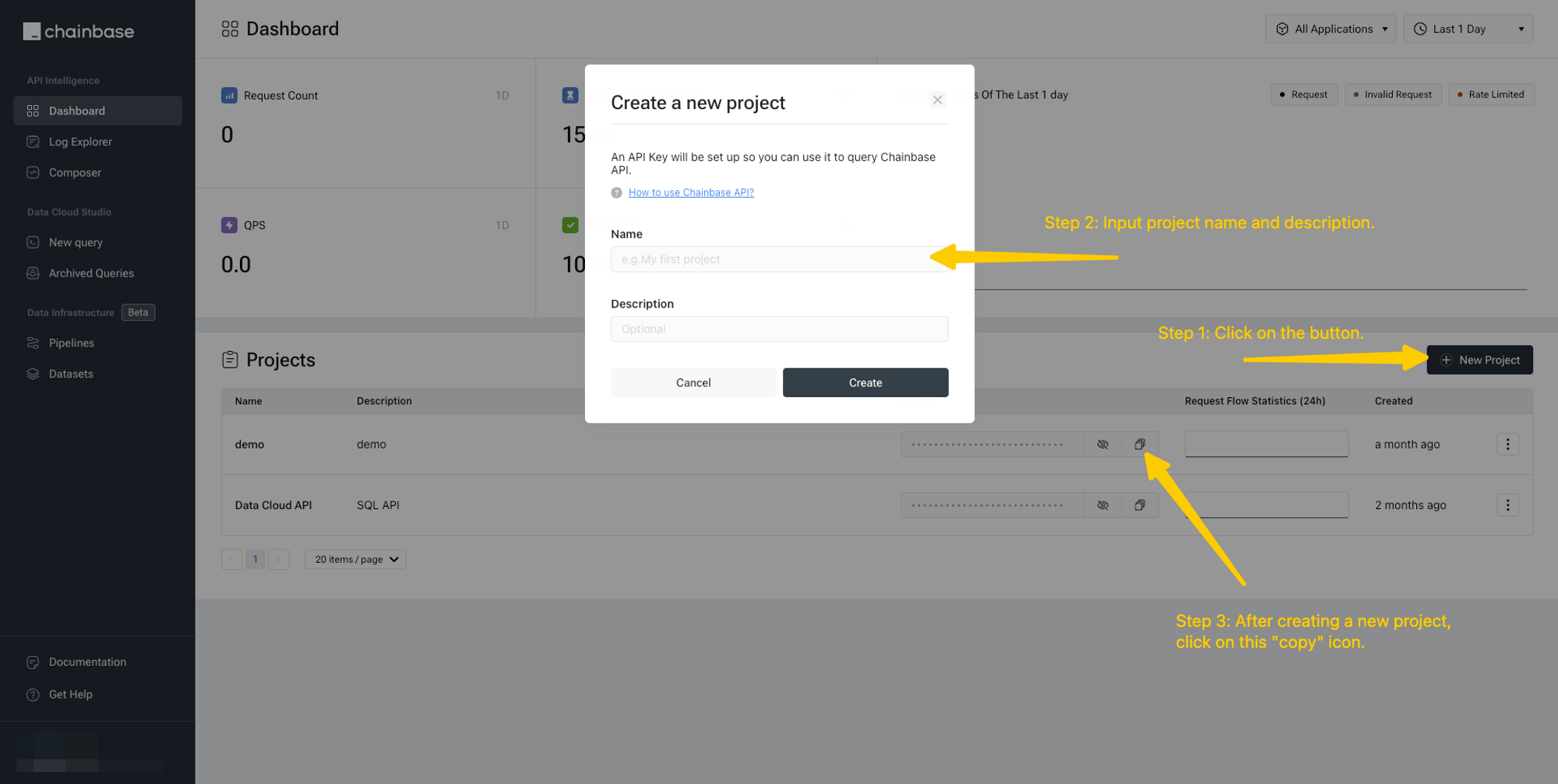data field of the response will be null.
Overview - Tools you need to work with Chainbase
- A free account at Chainbase with an API key.
- An IDE. Our examples are shown in JavaScript, you can use VS Code as your IDE for example.
- A wallet address as your input.
Step 1: Set up a free account at Chainbase
To better leverage the ability that Chainbase provides, you can register here for a free account and access to different APIs and data cloud. After logging into Chainbase, visit the dashboard to get an overview. Create a new project in the console and get an API key.
Step 2: Write script using Chainbase API
- Using
fetchin JavaScript.
- Using
axiosin JavaScript. You need to installaxiosusingnpm install axios --savein the terminal first.
Step 3: Print ENS domains
Chainbase API Get ENS domains takes the chain id and wallet address as parameters, and returns all the ENS domains owned by the wallet. To get data printed, run commandnode <filename>.js in the terminal. In this case, the ENS domains of Xiaocong’s wallet on Ethereum are as follows.